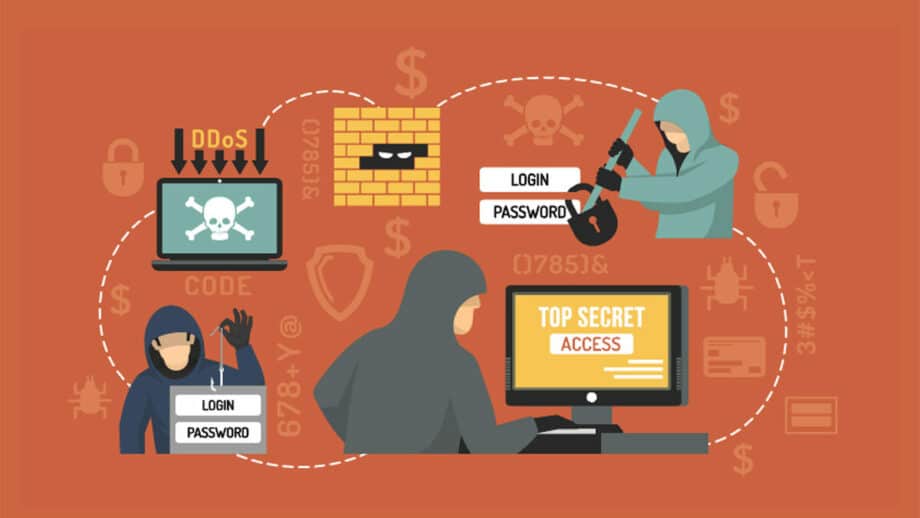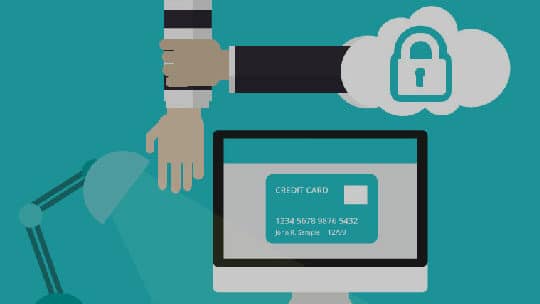Cloud computing is reshaping how businesses manage data. The global cloud computing market is estimated to rise to billions of dollars in 2028. Therefore, the hackers couldn’t help but valve their penetrating eyes into this growing lucrative market.
Cloud computing adoption has its own pitfalls. However, the most giant elephant in the room is and will continue to be the security.
Understanding Cloud-based Server Attacks
In this context, cloud attacks are cyber-attacks on services that are based in the cloud. These could be in the form of data storage and processing services or hosted applications under Platform as a Service (PaaS) or Software as a Service (SaaS) environments.
The consequences include data breaches, loss of unauthorized access to crucial information, and disruption of services.
Organizations genuinely need to act correctly in terms of security protocols and also have a ‘beading eye’ on their cloud assets. If you need more proof, you can just look at some of the major data breaches that hit major companies last year and remember why cloud security should be a priority.
Related: A Complete Guide to Cloud Data Migration for Businesses.
Cloud Security Breaches of 2022 that Raised Eyebrows

1. FlexBooker’s Cloud Catastrophe
January 2022 saw FlexBooker, the digital scheduling platform, that fell victim to a data breach. Hackers hacked into its AWS server, leading to the compromise of as many as 3.7 million accounts.
This was names, email addresses, phone numbers, and even some credit card info of their customers. FlexBooker says they patched things up, but security researchers disagree.
Reference: https://twitter.com/Laurent_Perche/status/1481438410569043972.
2. BlueBleed – Microsoft’s Azure Major Fumble
A misconfigured Azure Blob Storage bucket exposed 2.4TB of Microsoft customers’ data. The ripple effect was felt throughout tens of thousands of companies.
Worse still, the company’s support staff is on record for saying that their role does not involve alerting GDPR regulators about such bungles. The firm also minimized the seriousness of what happened and claimed that much data was a duplicate. However, the company never shared an actual number.
3. Chinese Police Leaks Data
Recently, hackers stole data from a Shanghai police database that stored delicate details of more than one billion Chinese citizens. It was a jolt to the heart of Chinese data integrity. The data was stored with Alibaba Cloud, implying that the management dashboard had probably been compromised.
4. Microsoft Ambushed by Lapsus$ Extortion Group
Lapsus$ hacking group steals 37GB of data from Microsoft’s Azure DevOps server. The data breach had even spilled out Microsoft’s source code for several projects. Microsoft, not blaming itself anymore, identified the compromised employee account as a cause of this breach.

5. Medibank’s Mammoth Data Debacle
Late last year, there was a major data breach at Medibank, one of Australia’s largest health insurers. In what proved to be a mind-blowing breach of the company’s data network hosted in the cloud, over 9 million customers’ data was exposed.
In addition to the names, this breach included the addresses and passport numbers of the customers. This entire data was later thrown onto the dark web and could be accessed by anyone. Medibank is also currently mired in some class-action lawsuits.
6. Pegasus Airlines’ Cloud Security Incident
Pegasus Airlines nears being charged for data loss of 6.5 TB. This breach caused sensitive flight data to be breached, including information about the crew and source codes manifest in a misconfigured AWS S3 bucket.
Pegasus Airlines could have avoided this incident, however; it is only that corporate security very occasionally gets the right priority.
7. Mangatoon’s Data Hack
One Piece lovers have been introduced to Mangatoon which has an affiliation with the loved anime characters. The site lost the personal information of 23 million of its own users in a breach on their unsecured Elasticsearch database just last year, unfortunately.
The privacy of personal information i.e., names, email addresses, and social media tokens was lost. Such security overlooks are classic. That is why the manga was not updated for several days and the fans were left very perplexed.
8. Puma in the Kronos Ransomware Crosshairs
Puma, the sportswear giant was one of those affected indirectly by ransomware attacks on the Kronos, a cloud-based HR management company. This breach compromised data of more than 6,000 Puma employees.
9. Amazon’s Prime Video Blunder
A security lapse occurred last year when a Prime Video database, with approximately 215 million records of viewers’ online viewing habits was exposed. Amazon blamed a misstep in the deployment process for this. There is only one bright side to the story – no payment info was stolen.
10. Civicom’s Cloud Calamity
Unprotected Amazon S3 bucket leaks 8TB in sensitive customer data for market research service Civicom. It comprised of the conversations done in private and personal recordings. Indeed, it is the best example of how not to keep a cloud-based environment secure.
Cloud Computing Attacks to Watch Out for

All of the security issues you’ve read above are just the tip of the iceberg. Cloud computing has seized the world of technology dictating those in need to be careful and ensure tight security measures are taken to protect this precious cloud.
Here’s the rundown of ten cloud computing attacks that warrant your utmost attention:
1. DDoS Attack
A Distributed Denial-of-Service (DDoS) attack is like a heavy shower. It implies an impressive amount of traffic attacking cloud services. This therefore leaves the system requiring assistance in processing valid requests. These can wreak havoc and subsequently result in astronomical financial difficulties and perception tragedy when essential services come under such siege of traffic.
Reference: https://twitter.com/Tharakasewwand8/status/1673182581125423104.
2. Account Hijacking
It involves the usage of a cloud computing account by some unauthorized persons who gain access cunningly. Once inside, they can also maliciously take advantage of vital resources or manipulate crucial information. They may use high-tech approaches to get login details.
3. Compromising a User’s Account
This is when an attacker is able to breach through the account holder, who could be taking their trust for granted or using deceitful means in order to extract login details. It differs from account hijacking as the account holder unknowingly becomes involved in the compromise.
4. Cloud Malware Injection Attacks
This is a technique whereby hackers introduce malware into cloud resources. It is similar to putting poison in a system, rendering essential processes unsustainable and potential destruction of data. This can range from exploiting weaknesses in the cloud infrastructure to using social engineering techniques that mislead users into downloading malicious software.

5. Insider Threats
The certainty of internal threat is a grim reality no matter how strong a fortress is from the outside. In some cases, the misuse of cloud values in clouts might be found among employees and contract workers. The difficulty of detecting such cases stems from the fact that those involved have authorized access, and their motives may be diverse.
6. Side-channel Attacks
It is an example of an attack that uses information leaked during the physical implementation of a system. This may include planting and performing compromising activities on genuine hardware by putting in place a malicious machine from where secret data can be stolen.
7. Cookie Poisoning
In other words, this entails tampering with cookies through the introduction of cloud applications that are infected. As such, it is well-established that cookies operate as preferences and history banks. When corrupt, they are used to hack into cloud applications.
8. Security Misconfiguration
It takes place when there are improper configurations of cloud resources to counter cyber threats. This entails correctly establishing the access controls, system security, and constant upgradation of system patches.
9. Insecure APIs
APIs without strong security can contain loopholes that hackers use to break into their systems or data. These include poorly documented shadow APIs and API parameters that are vulnerable to injection attacks.
10. Cloud Crypto Mining
Cloud crypto mining involves the use of cloud computing resources for crypto mining without authority. Indeed, they usually tap on stolen credentials or malware to exploit cloud resources to mine cryptos.
See also: 9 Best Cloud Computing Languages You Can Study Now.
How to Prevent Cloud Computing Attacks?

This has made it necessary for organizations to adopt layered security methods in order to protect themselves from cloud computing attacks. Here are some vital steps you need to take for the protection of your cloud assets:
1. User Education and Training
It is imperative that employees are educated and remain vigilant of all security risks, armed with best practices to prevent breaches. They should be able to identify phishing emails as well as understand the necessity of strong passwords.
2. Data Encryption
Data should be encrypted at rest as well as in transit. Even in the wrong hands, the terminator ensures that such data remains like an enigmatic puzzle.
3. Regular Audits and Vigilant Monitoring
Regular security audits should be done in order to stay on the course regarding the adopted security policy. Use monitoring tools like watchful sentries, spotting, and reacting that are to patrol and respond quickly when any security incident arises.
4. Strict Access Controls
Never waver in the enforcement of access control policies. You need to make sure that people can get only into the information and resources they need for their roles.
5. Multi-factor Authentication (MFA)
Firms should use MFA to require multiple forms of verification. This adds an extra layer of security against unauthorized access.
6. Secure Your APIs Diligently
Provide regular checks on APIs, and execute the documentation, and authorization for API usage together with acts of validating and sanitation mechanisms.

7. Incident Response Strategy
Create an all-inclusive incident response plan. Being proactive and having security breach action plans can control much destruction.
8. Backup Data with a Recovery Plan
Keep data routinely backed up in a secure place. This ensures that your data can be retrieved without any problems when there is a loss or a ransomware attack.
9. Employ Network Security Measures
Protect your network using firewalls, intrusion detection systems, and secure network architectures.
10. Stay Updated with Regular Patches
Keep updating systems and applications with the latest patches of security.
Do I Need a VPN for Cloud Security?
But with locked-down cloud assets, what about your online traffic? It could be that you are taking a sip of coffee and accessing your files on the cloud remotely through public WiFi. But when the network is a sketchy one (as usually happens), your device and web presence are at the mercy of potentially harmful leeches.
For your security, you need a Virtual Private Network (VPN) while enjoying the public Internet. A top-notch VPN service safeguards you via a secure tunnel, which ensures that any such exchanged data remains encrypted and inviolable.
Encrypting Your Folders on the Cloud
Encryption is the key to locking down your data in the cloud. We have numerous encryption tools out there that will hold your files so tight. One with strong end-to-end encryption, platform agnosticism, and even biometric locks would be a nice choice.
Frequently Asked Questions (FAQs)

How can cloud computing attacks be prevented?
Do quickly digress from the extensive list of security measures we have outlined above. In brief, cloud security strongholds entail user education, data encryption, vigilant monitoring, strict access control, multi-factor authentication, fortified APIs, and the use of encryption tools.
What is cloud computing all about?
In the modern world, cloud computing is the new way of accessing a variety of services through the internet. Databases, servers, networking, and software – are then provided to offer a full package of digital needs.
What’s the role of encryption in cloud security?
Encryption is the “secret sauce” in cloud security. It turns your data into a secret code that leaves everyone guessing. It is essentially your decoder ring, making certain that only those with the secret key can make sense of your data.
Related: Virtualization in Cloud Computing: All You Need to Know.
The Grand Takeaway…

The adoption of cloud computing is not only beneficial but also necessary for the successful existence of any modern business. However, the focus must be on protecting data. In this regard, cloud maestros should subject their entire security policy framework to avoid taking unnecessary risks; invest in appropriate protective software and engage experienced professionals for protecting the safety of the cloud infrastructure.
With constant vigilance, routine safety checks, audits, as well as security awareness culture, an organization can protect the unparalleled risks and trust in the privacy of its cloud data. Such proactive efforts enable firms to fully embrace cloud computing, in confidence that their valued digital assets will be secure.





